by Benjamin May 04,2025
The 1970s marked a period of significant transformation for Marvel Comics, characterized by the introduction of iconic characters and pivotal storylines such as "The Night Gwen Stacy Died" and Doctor Strange's encounter with God. However, it was the 1980s that truly shone as a golden age for the company, with legendary creators producing landmark runs on some of Marvel's most beloved titles. This era saw Frank Miller's transformative work on Daredevil, John Byrne's innovative take on the Fantastic Four, David Michelinie's compelling Iron Man stories, and the zenith of Chris Claremont's X-Men run, alongside upcoming masterpieces from Roger Stern on Amazing Spider-Man and Walt Simonson on Thor. These creators and their contributions are essential to understanding the enduring appeal of these characters into the present day.
When examining the comprehensive history of the Marvel Universe, the 1980s stand out as a pinnacle period. Join us as we delve into Part 7 of our exploration of Marvel's essential issues!
Chris Claremont's defining tenure on the X-Men began in 1975, but it was during the early 1980s that he produced some of his most memorable work. The Dark Phoenix Saga, spanning X-Men #129-137, is perhaps the most iconic X-Men story ever told. This saga chronicles Jean Grey's transformation into the Dark Phoenix, a cosmic entity corrupted by the Hellfire Club, and her subsequent battle with her own darker nature. Illustrated and co-plotted by John Byrne, this epic space opera introduced key characters like Kitty Pryde (Shadowcat), Emma Frost, and Dazzler. Jean Grey's ultimate sacrifice remains one of the most poignant moments in X-Men lore, resonating deeply even with the knowledge of her eventual return. While adaptations like X-Men: The Last Stand and Dark Phoenix have attempted to capture this story, fans generally agree that the animated series, such as X-Men: The Animated Series and Wolverine & the X-Men, have done it more justice.
AnswerSee ResultsThe next significant story, Days of Future Past, appeared in X-Men #141-142. This narrative, involving the Sentinels and time travel, features an adult Kitty Pryde returning to the past to prevent the assassination of Senator Robert Kelly by Mystique and the Brotherhood of Evil Mutants, an event that would otherwise lead to a dystopian future dominated by Sentinels. This two-issue arc has become one of the most celebrated X-Men stories and has inspired numerous revisits by other creators. It was notably adapted into the 2014 film X-Men: Days of Future Past and served as the basis for a season arc in Wolverine & the X-Men.Completing the trio of essential X-Men stories from this period is X-Men #150, where a confrontation with Magneto nearly results in Kitty Pryde's death. This incident prompts Magneto to reveal his Holocaust survivor backstory, a revelation that has since become a cornerstone of his character development, leading to his transformation into a more complex, morally ambiguous figure.
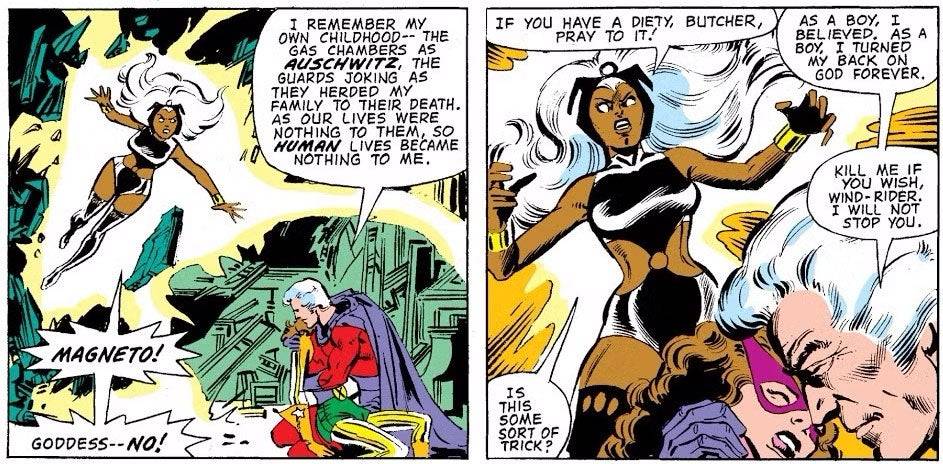 X-Men #150The First Appearances of Rogue, She-Hulk, and the New Mutants
X-Men #150The First Appearances of Rogue, She-Hulk, and the New MutantsThe 1980s also introduced some of Marvel's most enduring female characters. Rogue, initially a villain and member of Mystique's Brotherhood of Evil Mutants, debuted in Avengers Annual #10. Her first act was to drain the powers of Carol Danvers (Ms. Marvel), setting both characters on new paths. This issue also highlighted Carol's complex relationship with the Avengers, particularly following traumatic events detailed in Avengers #200. Though challenging to adapt due to its sensitive content, Avengers Annual #10 remains a crucial chapter in Marvel's history.
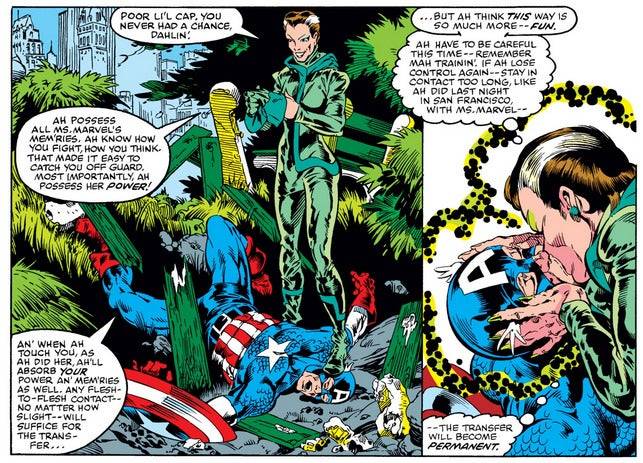 Rogue... as a bad guy in Avengers Annual #10.She-Hulk, co-created by Stan Lee, made her debut in Savage She-Hulk #1. Jennifer Walters, Bruce Banner's cousin, gains powers after a life-saving blood transfusion. While her initial series was not well-received, She-Hulk found her stride when she joined the Avengers and Fantastic Four. Tatiana Maslany later brought the character to life in the MCU's She-Hulk series.
Rogue... as a bad guy in Avengers Annual #10.She-Hulk, co-created by Stan Lee, made her debut in Savage She-Hulk #1. Jennifer Walters, Bruce Banner's cousin, gains powers after a life-saving blood transfusion. While her initial series was not well-received, She-Hulk found her stride when she joined the Avengers and Fantastic Four. Tatiana Maslany later brought the character to life in the MCU's She-Hulk series.
The New Mutants, Marvel's first X-Men spin-off series, debuted in Marvel Graphic Novel #4 before getting their own title. This team of teenage mutants, including Cannonball, Sunspot, Karma, Wolfsbane, and Dani Moonstar (Mirage), along with the later addition of Illyana Rasputina (Magik), provided fresh narratives within the X-Men universe. The 2020 film The New Mutants featured this lineup, with Anya Taylor-Joy portraying Magik.
Daredevil #168 marked the beginning of Frank Miller's influential run on the series, introducing Elektra and redefining Daredevil's mythos. Over the next two years, Miller crafted a dark, noir-inspired narrative that included iconic moments like Kingpin becoming Matt Murdock's arch-nemesis, the introduction of Stick, Daredevil's first clash with the Punisher, and the tragic death of Elektra at the hands of Bullseye in issue #181. Miller's work in Daredevil #168-191 inspired subsequent adaptations, including the 2003 film and the 2015 Netflix series, with the upcoming MCU show Daredevil: Born Again set to continue this legacy.
Iron Man's Doomquest, spanning Iron Man #149-150, was the final masterpiece from David Michelinie and Bob Layton's first run. This story featured Iron Man's first solo confrontation with Doctor Doom, resulting in a time-travel adventure to Arthurian legend. While teaming up with King Arthur, Iron Man faced off against Doom and Morgan le Fay, solidifying Doom's place in Iron Man's rogues gallery.
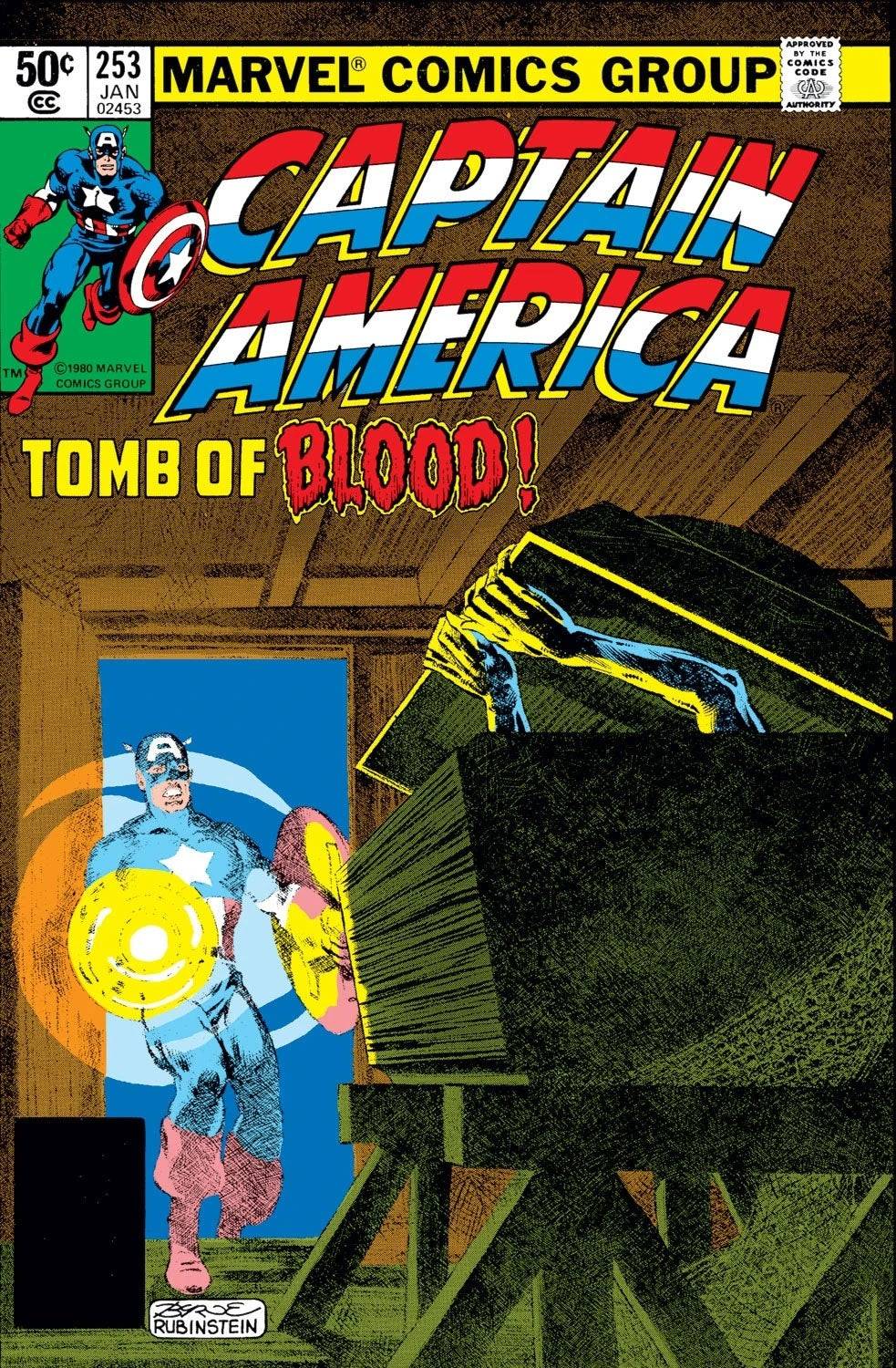 Captain America #253Captain America #253-254 featured a gripping storyline with Roger Stern and John Byrne's run, where Captain America battled the Nazi vampire Baron Blood. This darker narrative showcased Cap's WWII ties and the Invaders, culminating in a dramatic and visually stunning conclusion.
Captain America #253Captain America #253-254 featured a gripping storyline with Roger Stern and John Byrne's run, where Captain America battled the Nazi vampire Baron Blood. This darker narrative showcased Cap's WWII ties and the Invaders, culminating in a dramatic and visually stunning conclusion.
Moon Knight, first introduced in Werewolf by Night #32, became a fully realized hero with his own series starting with Moon Knight #1. This issue, crafted by Doug Moench and Don Perlin, established Moon Knight's backstory and introduced his alter egos, Steven Grant and Jake Lockley, setting the stage for all future narratives.
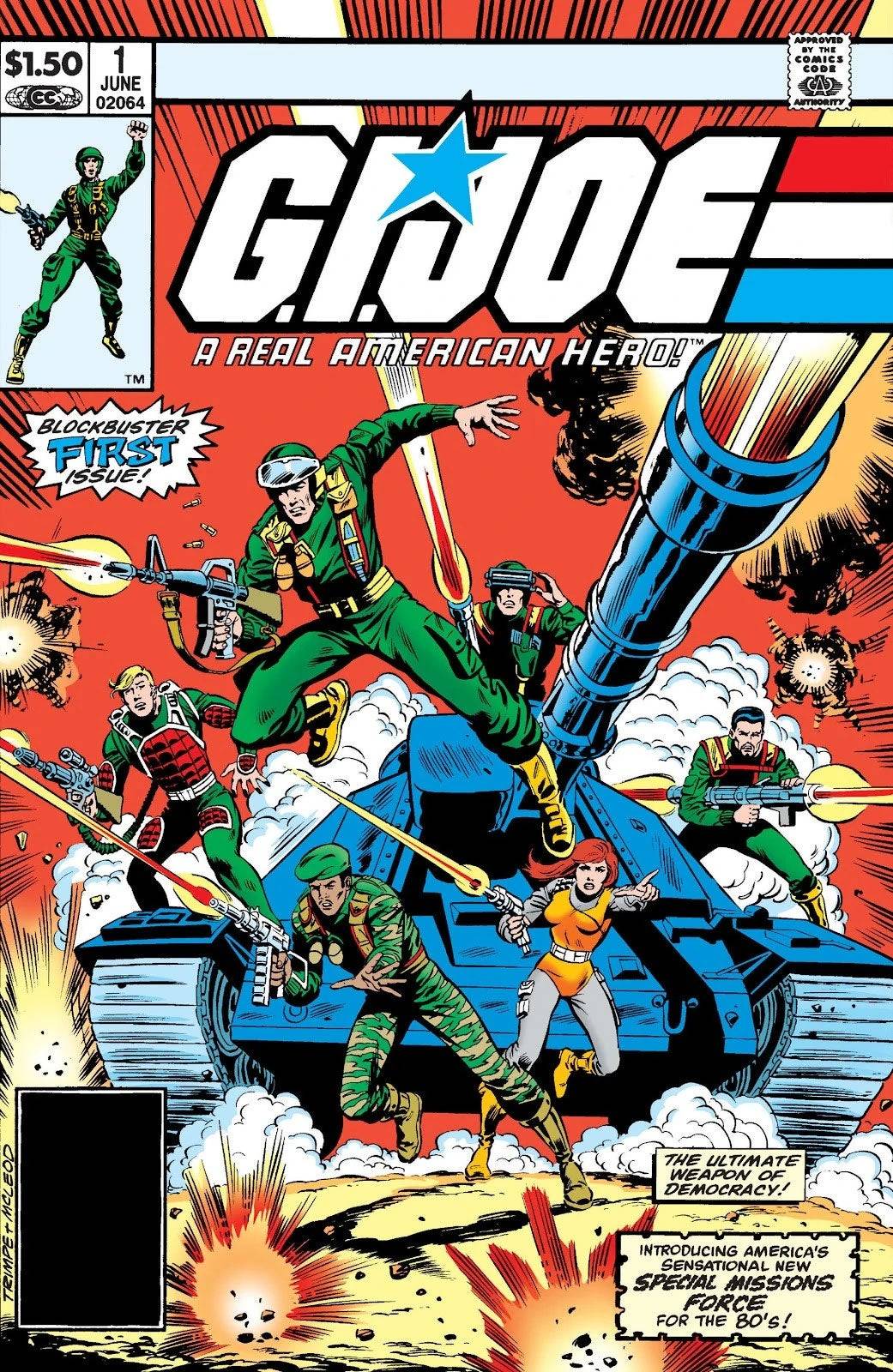 G.I. Joe #1Although not owned by Marvel, the G.I. Joe franchise owes much of its character development to the company. The Marvel comic, launched in 1982 as a tie-in for the Real American Hero toy line, introduced the concept of Cobra and fleshed out characters like Scarlett, Snake Eyes, Storm Shadow, Lady Jaye, and the Baroness. Larry Hama's writing not only made G.I. Joe one of Marvel's most popular titles but also resonated with female readers by treating female characters with equal respect. This comic's success is a testament to Hama's and Marvel's contributions to the G.I. Joe mythology.
G.I. Joe #1Although not owned by Marvel, the G.I. Joe franchise owes much of its character development to the company. The Marvel comic, launched in 1982 as a tie-in for the Real American Hero toy line, introduced the concept of Cobra and fleshed out characters like Scarlett, Snake Eyes, Storm Shadow, Lady Jaye, and the Baroness. Larry Hama's writing not only made G.I. Joe one of Marvel's most popular titles but also resonated with female readers by treating female characters with equal respect. This comic's success is a testament to Hama's and Marvel's contributions to the G.I. Joe mythology.
Mobile Legends: January 2025 Redeem Codes Released
Pokemon TCG Pocket: Paralyzed, Explained (& All Cards with ‘Paralyze’ Ability)
Android Action-Defense
Brutal Hack And Slash Platformer Blasphemous Is Coming To Mobile, Pre-Registration Now Live
Pokémon TCG Pocket Is Dropping a Trade Feature and Space-Time Smackdown Expansion Soon
Mythical Island Debuts in Pokemon TCG, Time Revealed
GWENT: Top 5 Decks for 2025 - Strategies Revealed
Marvel Rivals Showcases New Midtown Map
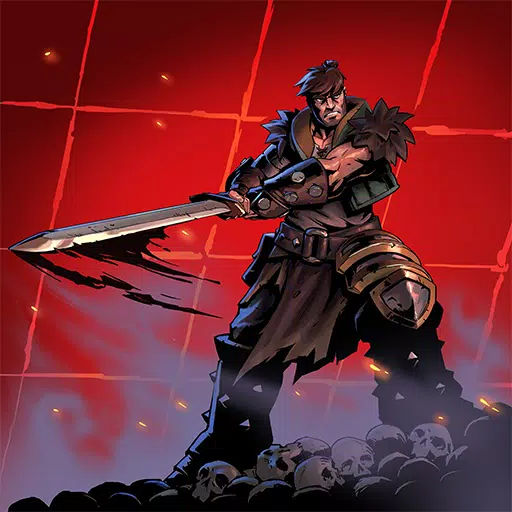
Grimguard
Download
When I was reincarnated
Download
Fairy Evolution: Magic Idle
Download
Pocket Journey (Unreleased) by Maryanne Adams
Download
Labo Christmas Train Game:Kids
Download
Lucky Lady's Charm Deluxe Slot
Download
Vô Cực Đại Chiến
Download
Lunch with Ronan mod
Download
Diamond Deluxe Casino - Free Slot Machines
Download
Blue Archive launches Radiant Moon event with new characters
Dec 26,2025
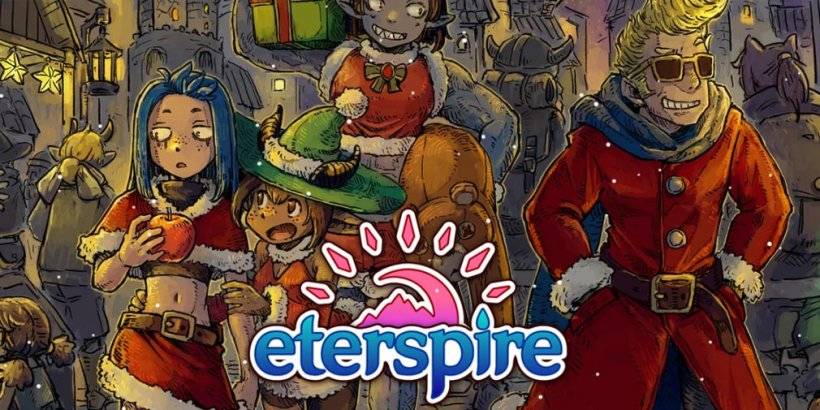
Eterspire's 2023 Update Adds Snowy Vestada and Controllers
Dec 26,2025
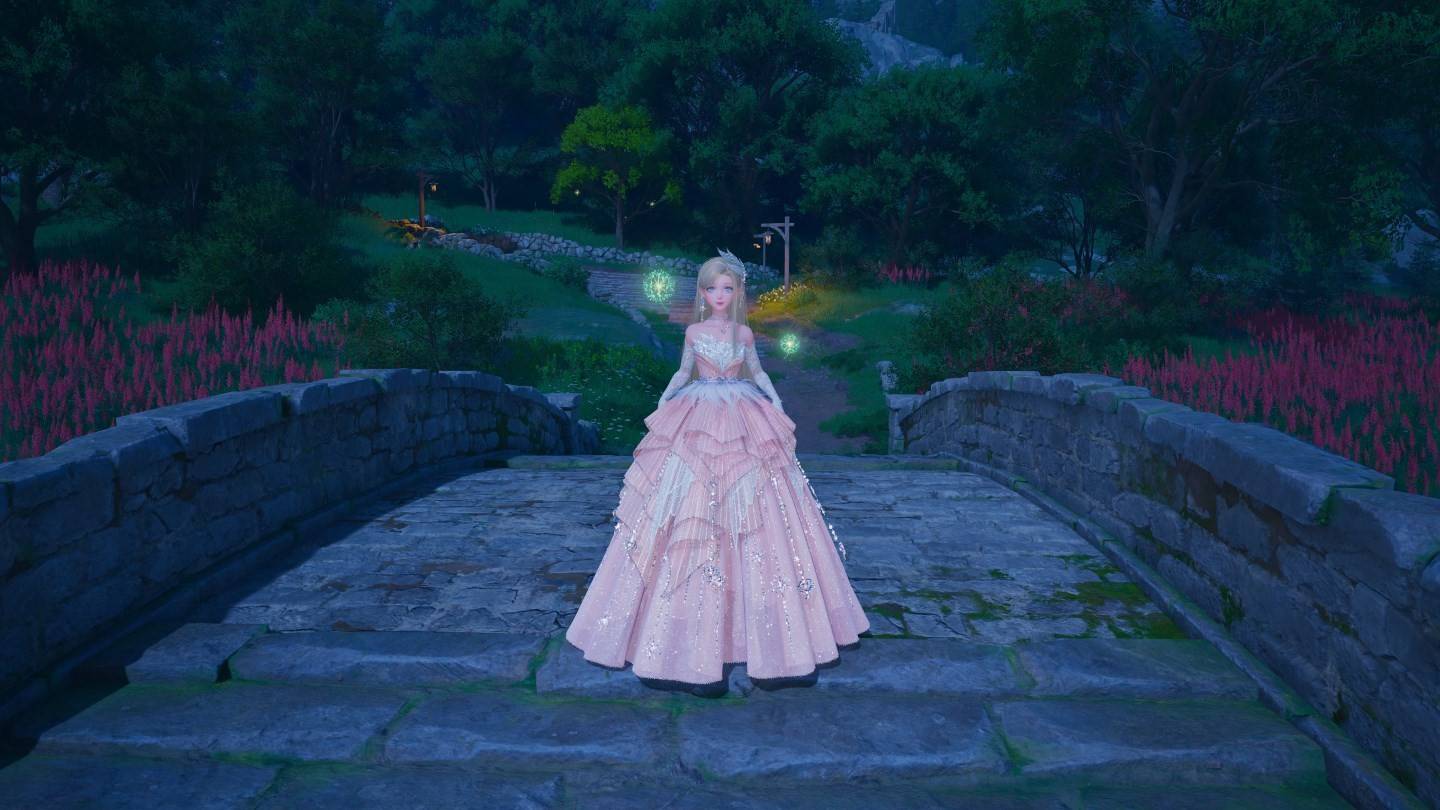
Infinity Nikki: Top Fashion Duel Strategies
Dec 25,2025
EA Retires Origin Platform, Affects Users
Dec 25,2025

Pikmin Bloom Earth Day Walk Party Begins
Dec 24,2025